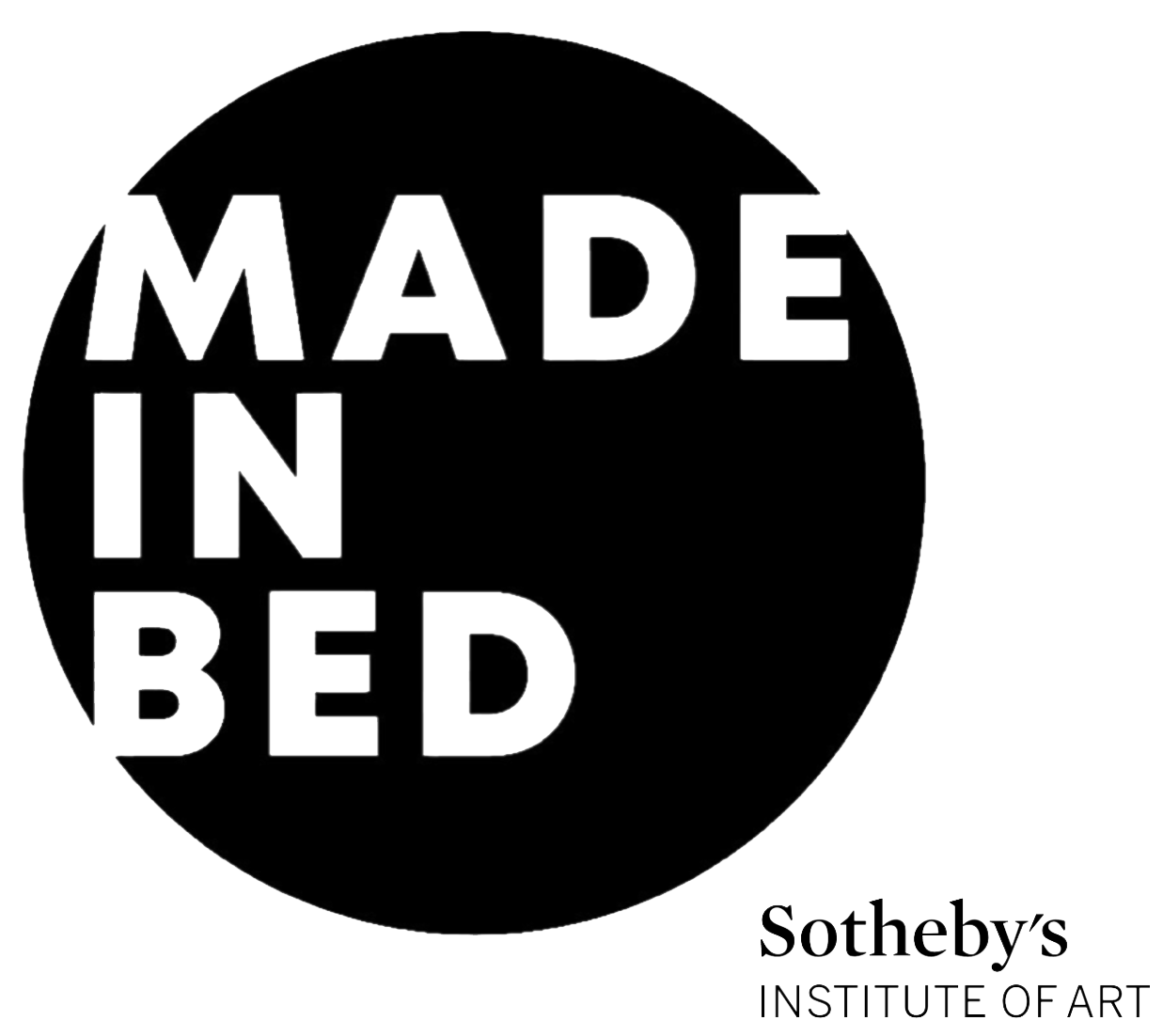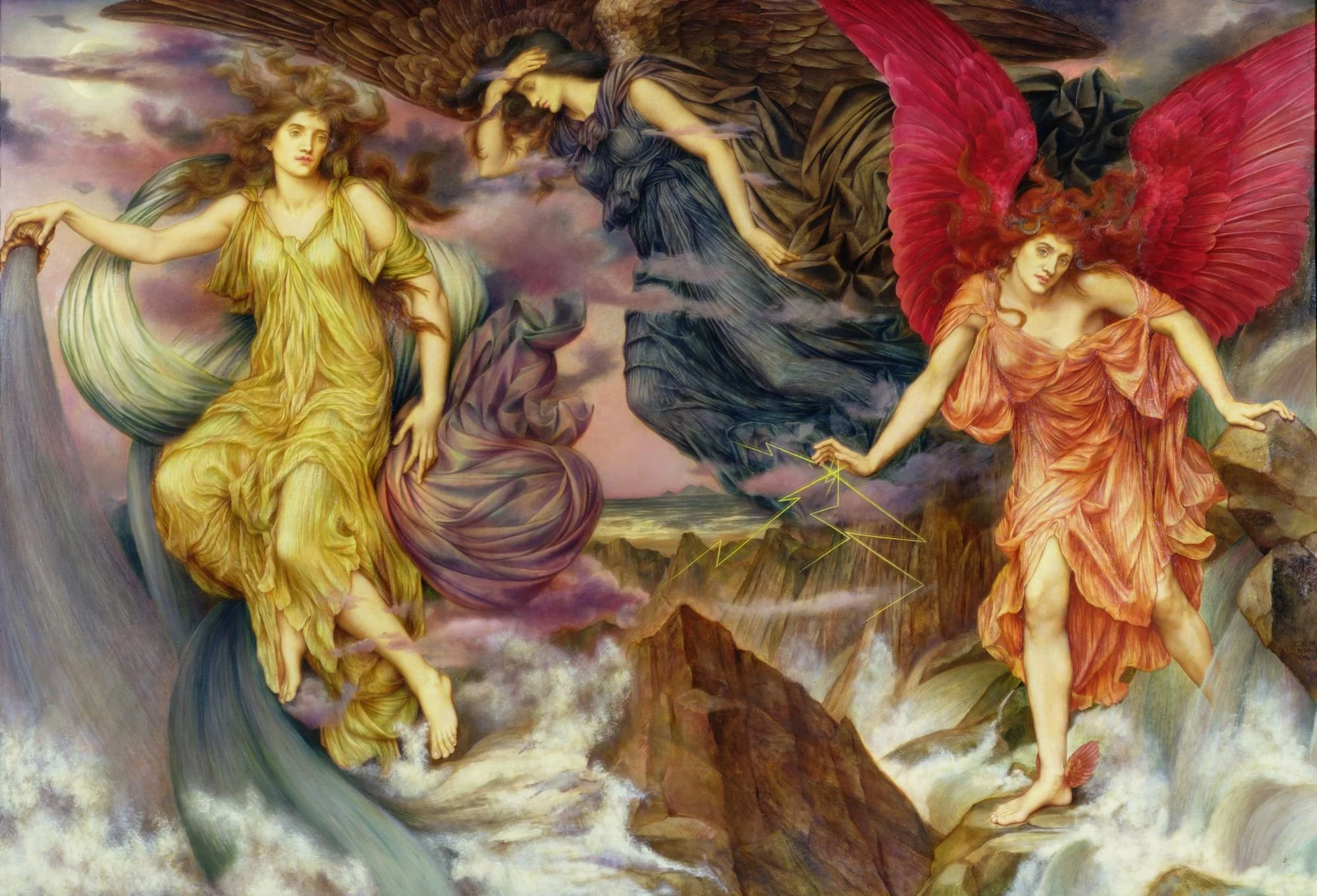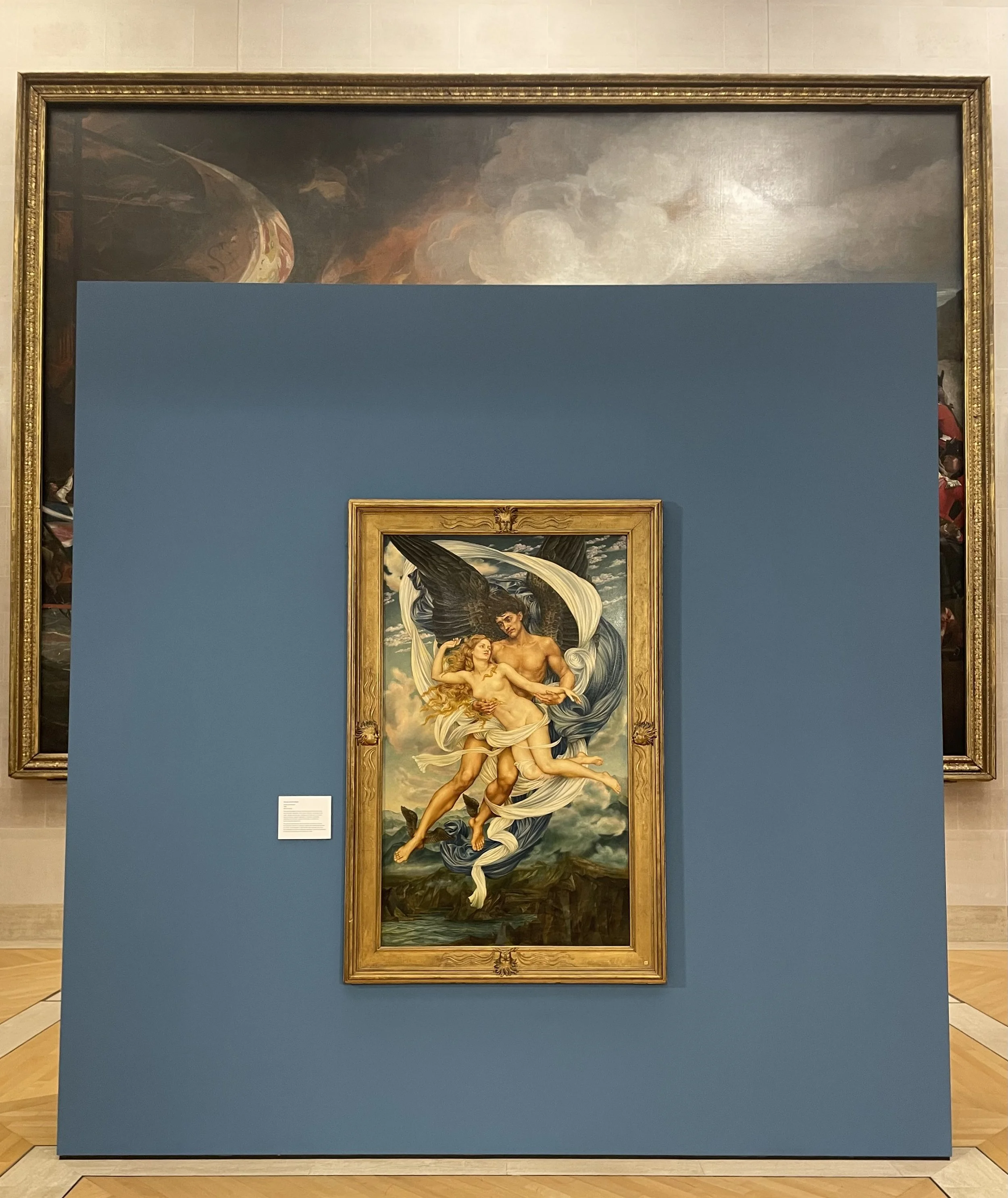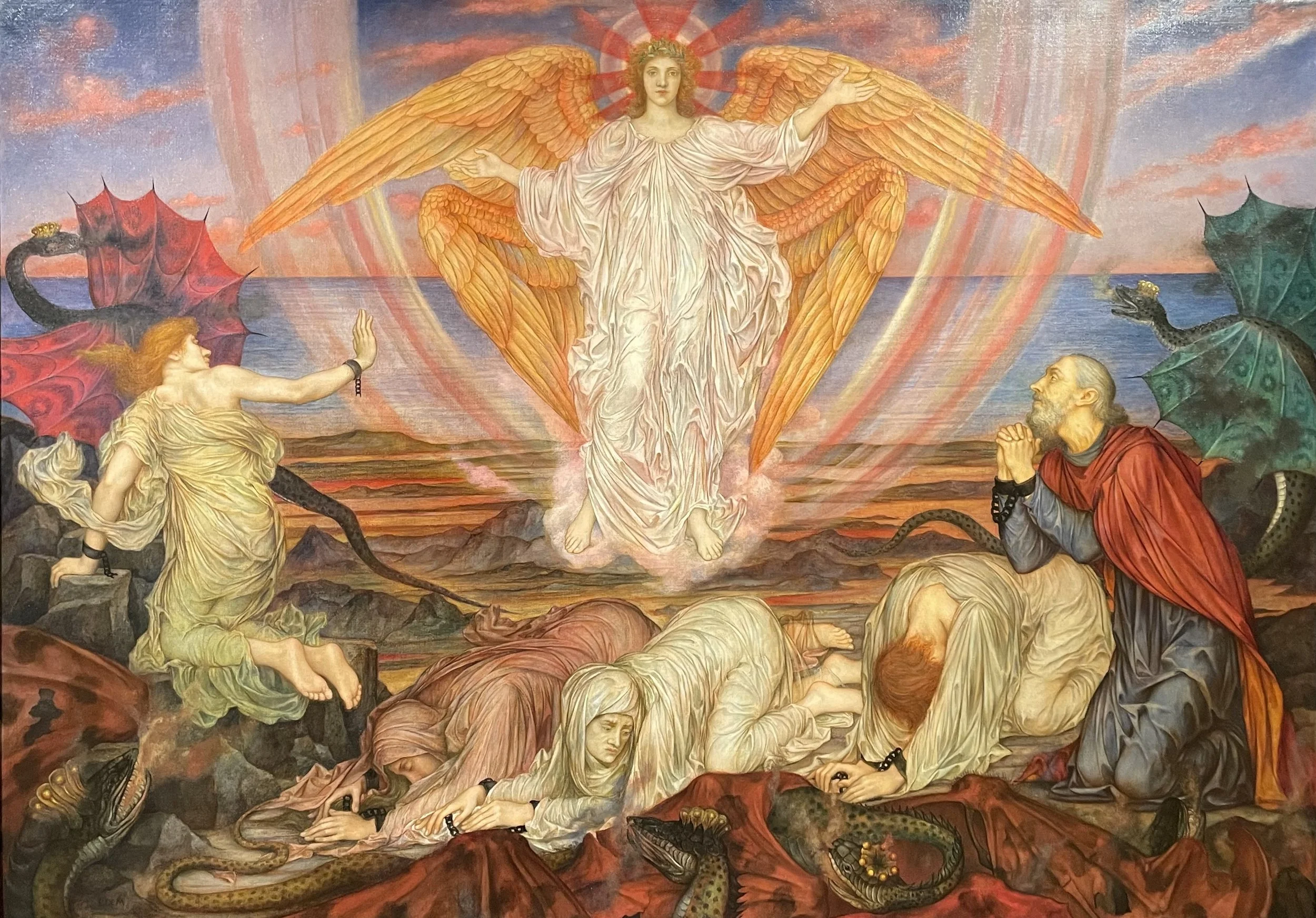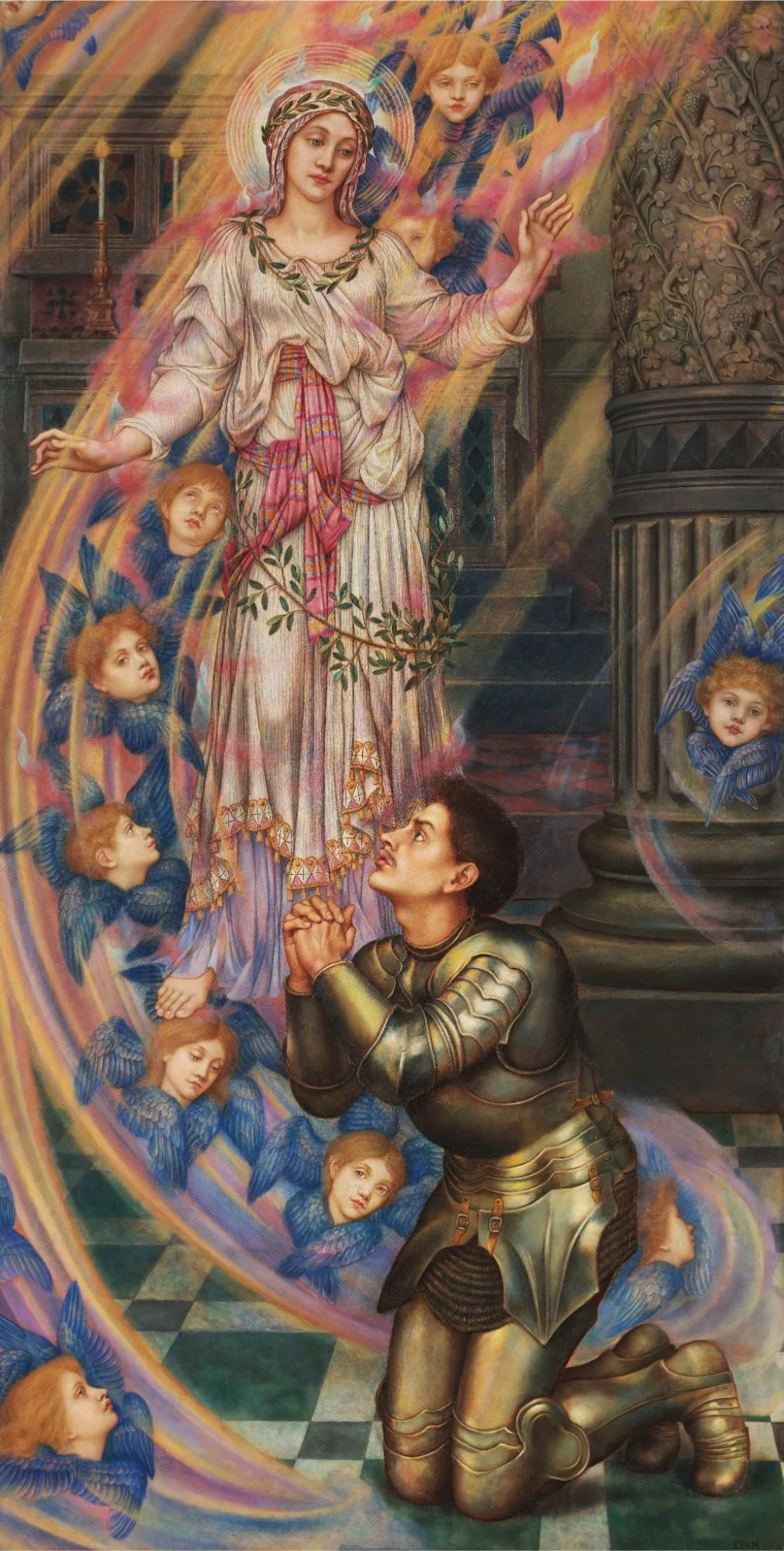Evelyn De Morgan: The Modern Painter in Victorian London @ Guildhall Art Gallery
Nestled within the concrete and glass of the City, sits Guildhall. Gothic and sophisticated, the stoic historical centre perches upon a Roman amphitheatre, a silent yet monumental treasure trove, sitting quietly, observing the chaos of central London. Inside, curators have bought together a collection of paintings like no other. Colour exudes from each canvas, emotion seeps through each brushstroke; figures are represented with the skill of a Renaissance master, whilst the drapery is painted with such accuracy that it would strike jealously even within the heart of Botticelli. The artist? Mary Evelyn De Morgan.
The Storm Spirits, Mary Evelyn De Morgan, 1900. Photo courtesy of the City of London.
Within Guildhall Art Gallery John Singleton Copley’s The Defeat of the Floating Batteries at Gibraltar hangs, a monumental canvas over thirty-five square meters. A naval battle is taking place; limp bodies are flung into the dark, foreboding water, a fire rages in the background, lighting up the sinister dark clouds as patriotic sails billow in the wind. It is an excellent example of the history paintings that male artists of nineteenth century produced en masse, where the romanticisation of war and suffering was mixed into each pigment. Now, standing stoically in front of this painting, a much smaller canvas hangs on a blue wall, its visual impact matching, if not exceeding, that of the Copley. Blue and white cloths twist and weave across the canvas, flowing through two bodies held in mid-air. Each ligament, each muscle, each tendon, is tensed to perfection, each hair on their heads meticulously placed. The compositions colours are crisp, and the brushstrokes are invisible in this depiction of Boreas and Oreithyia, painted in 1896 by Mary Evelyn De Morgan.
Boreas and Oreithyia, Mary Evelyn de Morgan, in front of John Singleton Copley’s The Defeat of the Floating Batteries at Guildhall Art Gallery. Photo courtesy of the author.
In the nineteenth century, for a woman born into an upper-middle-class family, pursuing a professional artistic career was a daring act. Artistic ambition was expected to remain confined to traditional pastimes—needlework, piano, or watercolours done in the privacy of the drawing room. But De Morgan, undeterred by convention, followed her creative path with unwavering resolve. When she expressed her ambition, her mother’s response was telling: she ‘wanted a daughter, not an artist’. Yet, De Morgan persisted. In 1872, she enrolled at the Royal College of Art, and the following year became one of the first women admitted to the Slade School of Art. With the encouragement of her uncle, the artist John Roddam Spencer Stanhope, she travelled to his villa in Florence to study the works of the Italian Renaissance. While still a student, she sold her first painting. Aware of the prejudices against female artists, she exhibited under the gender-neutral name "Evelyn De Morgan". Her debut at the Dudley Art Gallery was met with acclaim and earned her a place at the Grosvenor Gallery Show, where her work caught the attention of figures such as Oscar Wilde.
Death of the Dragon, Mary Evelyn De Morgan, 1914. Photo courtesy of the author.
After completing her studies at the Slade, De Morgan’s practice only deepened. She moved from compositional sketches to painstaking life studies - faces, hands, and feet rendered with almost anatomical precision. This exhibition pays tribute to her relentless pursuit of perfection. Her figures, often female, are infused with emotional depth and set against radiant palettes. Weather motifs - wind, rain, fire - serve not only as narrative devices but as metaphors for emotional and societal upheaval. A profound pacifist, De Morgan responded to the violence of the Boer War and the First World War not with grand battle scenes, but with allegory and symbolism. In Our Lady of Peace (1907), a knight kneels in a chapel before setting off to war, a vision of the Virgin appearing above him as he prays for protection and peace. This quiet yet powerful representation encapsulates De Morgan’s critique of violence. Rainbows and prisms of light break across the canvas, lending a divine luminosity that softens the tension between conflict and hope. In these works, she achieves something rare by intertwining Renaissance technique with modern sentiment, uniting exquisite drapery and classical form with saturated colour and elemental personification.
Our Lady of Peace, Mary Evelyn De Morgan, 1907. Photo courtesy of The De Morgan Foundation.
This monographic exhibition explores her career, uncovering the cultural influences that shaped her work, immersing visitors in her artistic process, whilst bringing forth the story of yet another underrated female artist. But one question remains. Is it not time we call her by her name? After all, Mary De Morgan only used her gender-neutral middle name to combat the sexist nature of the time. It is time we showed the world that this is the work of a woman, who defied the odds to become one of the most groundbreaking professional artists of the period.
Evelyn De Morgan: The Modern Painter in Victorian London, is on at Guildhall Art Gallery until 4th January 2026.
Emilia Luders
Reviews Co-Editor, MADE IN BED
